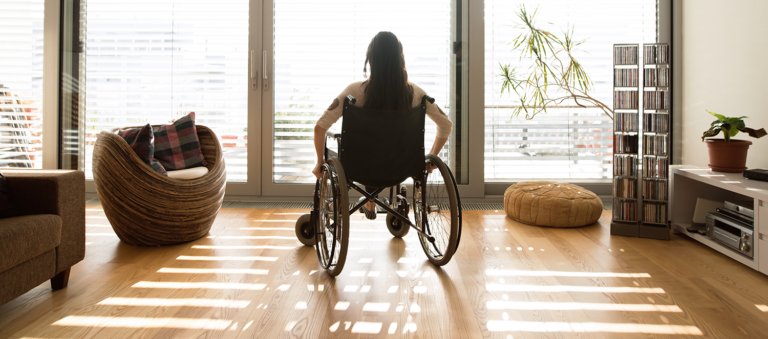This week the Biden Administration released The White House Blueprint for a Renters Bill of Rights, acting on a promise to ease the burden of housing costs, and encourage more affordable home ownership for Americans.
The 19 page document, prepared by the Domestic Policy Council and National Economic Council, outlines five principles intended to support federal policy change which promotes fairness in multifamily and rental housing in the United States.
The five principles include the need for renters to have access to:
- Safe, quality, accessible, and affordable housing
- Clear and fair leases
- Education, enforcement, and enhancement of rights
- The right to organize
- Eviction prevention, diversion, and relief
So what does this mean for the multifamily industry?
According to a press release published Wednesday, the National Apartment Association (NAA) has been in contact with the White House for months in regards to the Renters Bill of Rights, and according to the release, advocated to help “avert an executive order advanced by renters advocates and members of congress, which would have imposed immediate policy changes.”
The blueprint emphasizes the need to curb “egregious” rent increases, provide legal options for residents facing eviction, expanding the Fair Housing Act, and pushes for more transparency from property owners and managers.
As it stands, the Renters Bill of Rights does not constitute US government policy, and is merely a blueprint outlining potential action and principles should government agencies decide to act on them.
NAA said it remains steadfast in its opposition to expanding federal involvement in the landlord/tenant relationship, and will continue to collaborate with the White House and other federal agencies to explore housing policy changes.
Bob Pinnegar, NAA president and CEO said, “Complex housing policy is a state and local issue and the best solutions utilize carrots over sticks.”
The blueprint was developed as a part of a six-month research process which included input from tenants, housing providers, legal associates, and advocates.
“These principles will, where possible, guide future federal policies and programs, and updates to rulemaking, guidance, and notices governing existing policies and programs,” the blueprint reads.
Action items outlined in the blueprint will likely not affect any non-enterprise-backed multifamily rental properties until federal, state, or local policies are enacted. However, it is important to be aware of the priorities regarding tenant rights and principles as outlined by the Renters Bill of Rights.
Continue reading for a brief overview of the blueprint’s five core principles, including some quick statistics on the national rental housing market, and new administrative action that could impact the purchase of multifamily portfolios and operation.
Renters Bill of Rights by the numbers:
- 44 million households, or roughly 35% of the US population, live in rental housing.
- Between February 2021 and February 2022, the average rent increased 17.2% nationwide, and has risen nearly 26% since 2020.
- In 2019 almost one quarter of renter households (approximately 11 million households) spent at least half of their earnings on rent.
- Before the pandemic roughly 900,000 evictions were completed against tenants every year.
Principle 1: Access to safe, quality, accessible and affordable housing
- The blueprint argues that renters should pay no more than 30% of household income on housing costs.
- Services and amenities should be provided as advertised or included in the lease, including utility costs and functional appliances.
- Property owners, and state and local governments should ensure units meet habitability standards and are well maintained, including in common areas.
- There should be minimal barriers for renters when applying for housing and assistance, with fair and equal tenant screenings.
- Rent increases should be “reasonable” while acknowledging rent increases may be required over time to cover operating costs. All increases should be transparent and fair to protect against price gouging.
Principle 2: Clear and fair leases
- The blueprint states leases should not include mandatory arbitration, unauthorized terms, hidden or illegal fees, false representation, or other unfair or deceptive practices.
- A lease should provide transparent policy regarding security deposits, with deposits being seized and placed in an interest-bearing account for the duration of the lease.
- There should be reasonable advance notice from the owner/operator related to the unit, including notice for entry and significant changes.
- The blueprint notes that all leases should be written in clear, and accessible language to the renter, and the leasing process should ensure the tenant understands the terms of the lease in plain language.
- The administration argues that an increase in shared lease forms that are easily accessible through the internet have encouraged unenforceable provisions, meaning they would not hold up if contested in court. These provisions confuse the consumers as they often believe the terms are enforceable, and feel as though they are in a “take it or leave it” situation when searching for housing. “Few renters who read the lease and find concerning provisions mention their concern to landlords or leasing agents or contest the lease,” the document alleges.
Principle 3: Education, enforcement, and enhancement of rights
- The Fair Housing Act bans discrimination based on race, color, religion, sex, sexual orientation and gender identity, disability, familial status, and national origin. The blueprint argues the act should be expanded to expressly prohibit discrimination based on source of income, and install safeguards for survivors of domestic and dating violence, stalking, and sexual assault.
- The blueprint alleges that “millions of renters experience discrimination in the housing market annually,” although a large share do not report it.
Principle 4: The right to organize
- According to the blueprint, renters should have the freedom to organize without obstruction or harassment from their housing provider or property manager, or risk losing housing for their involvement.
- Tenants associations should be recognized by their housing providers or management companies.
- Renters should be able to identify the owner or operator of their building and know how to contact them.
- The document states, “There is abundant research that shows organizing has been met with retaliation from housing providers or property managers, such as prohibiting the use of public spaces, threatening eviction, or actually filing an eviction action.”
- Tenants within Department of Housing and Urban Development (HUD) programs already have recognized rights to organize for the purpose of creating a positive living environment and addressing issues related to their community. You may read HUD’s multifamily brochure on residential rights, and a Resident Organizing and Participation Toolkit here.
Principle 5: Eviction prevention, diversion, and relief
- Renters should have eviction protections that require justified cause to evict a tenant.
- Tenants should receive adequate notice of their lease not being renewed, and 30 days notice of an eviction action.
- Tenants should have options to avoid being evicted by filing through eviction diversion and grievance procedures. These could include a grace period for late rent, correcting lease violations, a standardized, formal dispute process, and opportunities to participate in a pre-eviction diversion program.
- The blueprint argues that eviction case filings should be immediately sealed to avoid future housing instability. Courts should only unseal eviction records after a judge decides against the tenant.
Renters Bill of Rights: New administrative action that could impact the purchase of multifamily portfolios and operation:
- The Federal Trade Commission and the Consumer Federal Protection Bureau, both independent agencies, will join together to obtain data, identify, and take action against acts and practices that unfairly prevent consumers from obtaining and retaining housing.
- The Federal Housing Finance Agency (FHFA) will increase affordability in the multifamily rental market by classifying a percentage of multifamily loans as “mission driven,” with loan agreements that restrict rents to affordable rates in line with incomes between 80-120% the area median income. At least 50% of multifamily loans purchased in 2023 must be mission-driven.
- FHFA and other agencies will identify opportunities and challenges to adopting and enforcing tenant protections, including policies that limit egregious rent increases at properties with Enterprise-backed mortgages.
- The United States Department of Agriculture (USDA) will institute a broad set of actions to advance clear leases to its 400,000 units in its multifamily rural development portfolio, ensuring tenants can seek compliance with lease terms without facing retaliation.
- USDA will create a tenant grievance FAQ outlining clear steps for tenants to appeal management decisions.
- USDA will explore updating its regulations to require borrowers to utilize a Tenant Rights and Responsibilities brochure, modeled after a similar document for affordable housing residents.
- HUD will award $20 million for the Eviction Protection Grant Program in 2023 to provide legal assistance to low-income tenants at risk or, or subject to eviction.




